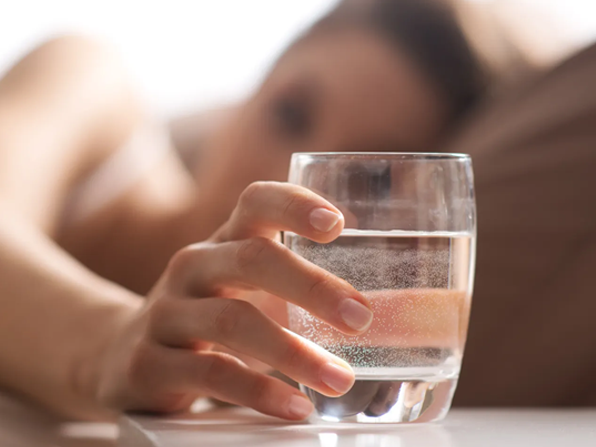
Are you trying to get a leaner body or maybe get shredded? Either way, since you landed here, I guess the main question on your mind is:
How does fat burning work?
Fat burning occurs when you consume fewer calories than you use throughout the day. When you create a calorie deficit, your body starts using stored fat for energy.
That was the simple answer.
With so much information, complicated terms, and misleading myths, people often get the wrong ideas. Many also think weight loss and fat loss always mean the same.
My experience in health and wellness has taught me to keep things simple. So, to help you fully understand the fat burning process, I'll start with the basics.
Where Body Fat is Stored and How We Burn It?
Our bodies store excess energy as fat cells, which are made up of triglycerides. When we consume fewer calories, our bodies tap into these fat stores to make up for the energy deficit and burn fat.
Let’s say you normally eat around 3,500 calories a day to maintain your weight. If you cut back and consume only 2,500 calories daily, your body now has a deficit of 1,000 calories. To make up for this shortfall, your body will start to use the fat stored in your fat cells as extra energy.
It then breaks down the triglycerides into fatty acids and glycerol, releasing the fat storage into your bloodstream. Put simply, your body starts burning fat to meet its energy needs. As long as you maintain that calorie deficit, fat cells shrink.
And if you wonder how to stop hunger when cutting calories, check out my proven ways to suppress appetite.
How to Get Your Body to Burn Stored Fat Faster?
To get your body to burn stored fat faster, you can use a combination of methods. I'll touch on those here briefly, as I wrote separate articles on each one.
Although not easy, fasting can be effective even on its own. When you give your body a break from constant eating, it shifts into a state where fat stores are used as energy.
Alongside fasting, a good diet like the Whole30 is a must. Consuming whole foods, rich in protein and healthy fats, can help keep you full and reduce cravings.
Of course, regular exercise is the key when aiming to lose weight or burn fat. Workouts help you regulate important hormones that play a significant role in fat metabolism.
If you're a fitness enthusiasts who have been bulking up, gained the desired weight, and now you want to get rid of the fat without losing muscle…here is how bodybuilders do it.
High-quality supplements like SKALD, which contain the right ingredients, will also help you lose fat. These will support your diet and exercise efforts to deliver better results in less time.
Combine these, and you'll create an environment in your body that encourages it to burn fat.
Now that you understand how to promote fat loss, let’s dive into the concept of the “Fat Burning Zone”.

What is Fat Burning Zone (Mode)?
The fat burning zone or mode refers to a specific range of heart rates. When in this zone, your body primarily uses fat as its main source of energy during exercise. When you learn how to enter and maintain this mode, you'll optimize workouts and improve results.
To help you get there, I'll dive a bit deeper into the topic.
When is Your Body in Fat Burning Mode?
Your body enters fat burning mode when you exercise at a moderate intensity. At this level, the human body shifts from using carbs for energy to tapping into fat stores. Physical activities like brisk walking, light jogging, or cycling at a steady pace will get most people in the mode.
Some sources suggest the burn fat zone is between 50% and 60% of your maximum heart rate. Others say it's in the 70-80% range.
In my practice, I've discovered that it depends on many factors, including age, gender, and environment…something I discuss in my 5 Facts for Losing Weight article.
I always tell people that number isn't set in stone and tell them how to get the best estimates.
There is a simple way to calculate your maximum heart rate (220 minus your age). For example, if you’re 30 years old, your maximum heart rate would be 190 beats per minute.
Then, to estimate your fat burning mode, you can use two equations. I came across those when reading an article on Very Well Health, and they work well.
- Maximum heart rate for your age x .64 = lower end of fat-burning zone
- Maximum heart rate for your age x .76 = higher end of fat-burning zone
So, if you're at the age of 30 with a maximum heart rate of 190 bpm…The zones where you burn most fat will be 121.6 (lower end) and 144.4 (higher end).
How to Stay in Fat Burning Mode?
To stay in fat burning mode, focus on keeping a steady pace during your workouts. The heart rate monitors you'll find in most gyms will assist you. Just keep track of your intensity and stay within the desired range.
To maintain a good body fat distribution, I alternate between periods of moderate physical activity and short bursts of higher intensity. I do cardio and resistance training and implement as many morning workouts as possible.
That's me…Your goals will be different.
But whatever your exercise routine is, stay consistent, hydrated, and sleep well. I share more tips on getting the most out of your workout in this article.
How to Tell if You are Losing Body Fat?
Checking your body weight isn't the most accurate measurement of your fat burning efforts. Don't let the scale fool you. Not losing weight doesn't mean your fat cells aren't shrinking. You may be building muscle.
Let me clarify.
Due to their different structures and functions, turning body fat into muscle isn't possible. However, I've often seen people lose fat and gain muscle at the same time. With a combination of a balanced diet and proper exercise, you can do it, too.
How Do You Gauge Fat Loss Progress?
The easiest way to do it is by paying attention to your clothes. Comparing before and after photos also works. But please don't do it every three days, it will discourage you. Measuring areas like your waist, hips, and thighs every week or so will give you a good indication.
In general, men hold more belly fat, while women should focus on hips and thighs.
One thing you may not know is that you first start losing hard (abdominal) fat that's around your organs. As the abdominal fat loss process starts, your liver, kidneys, etc., will function better.
That said, if you feel more energetic and in a good mood, your body burns fat.
The Bottom Line
I've seen folks making significant fat loss progress in a week without pushing themselves too hard in the gym. I also know people who worked out five times a week with minimum results for the first month.
Here is the thing…Everyone's metabolism, energy levels, body composition, etc. are different. Don't compare yourself to others, and be patient. Avoiding quick fixes is one of the secrets to sustainable fat loss.
If things aren't working out as expected, you can boost the process…
After using SKALD for a while, I confidently recommend it to people I train and they also see results.




